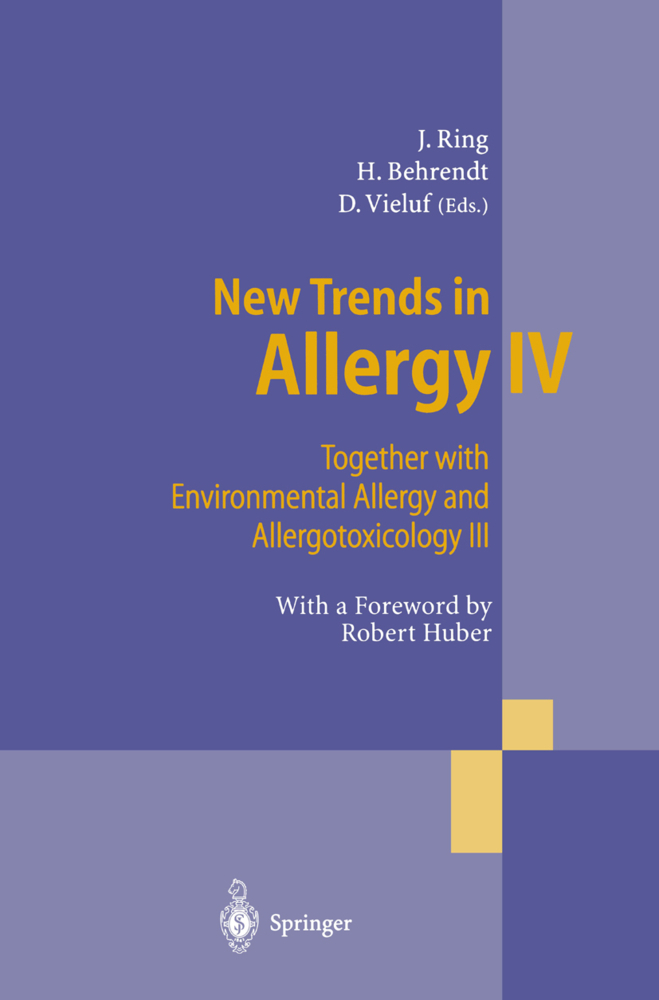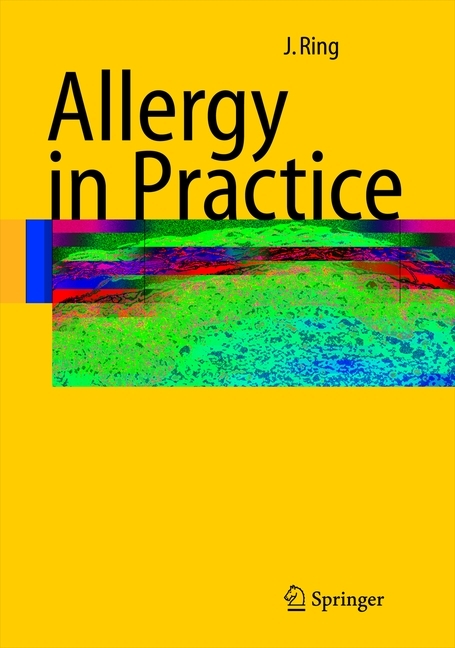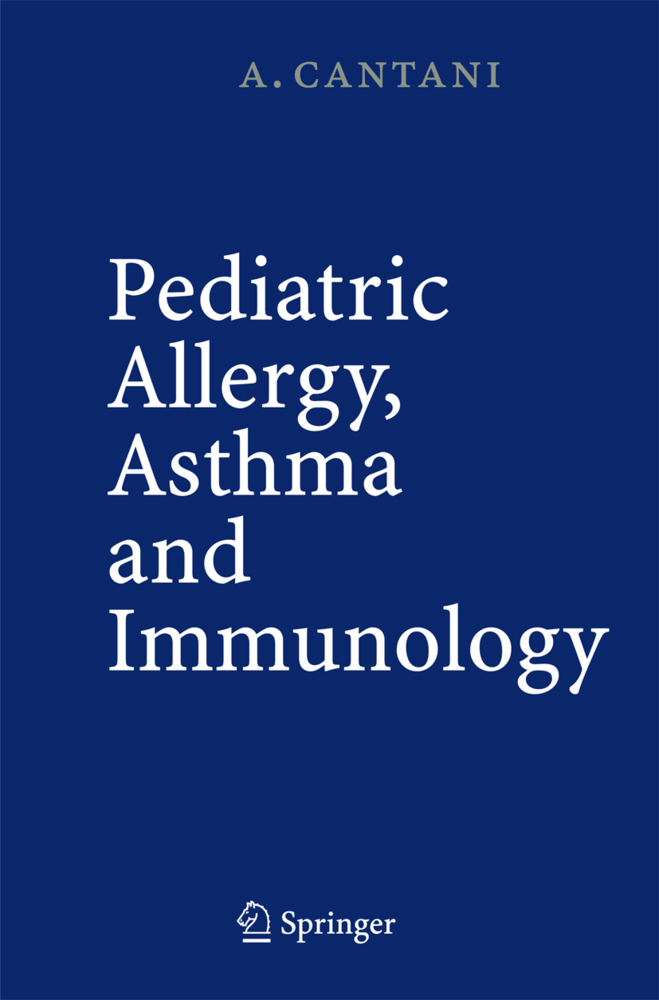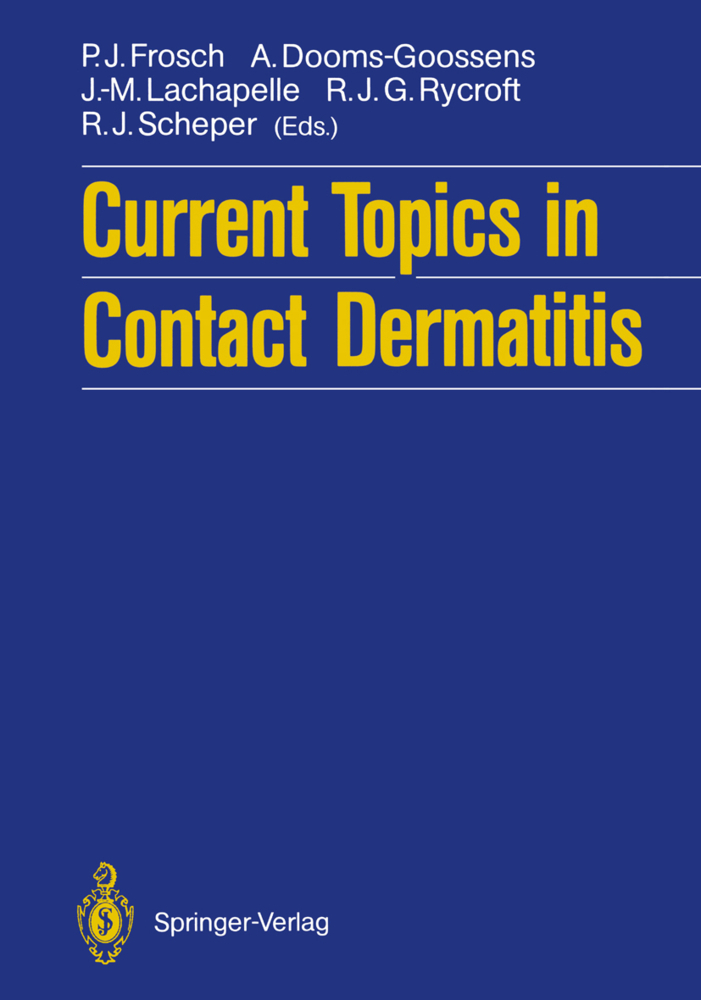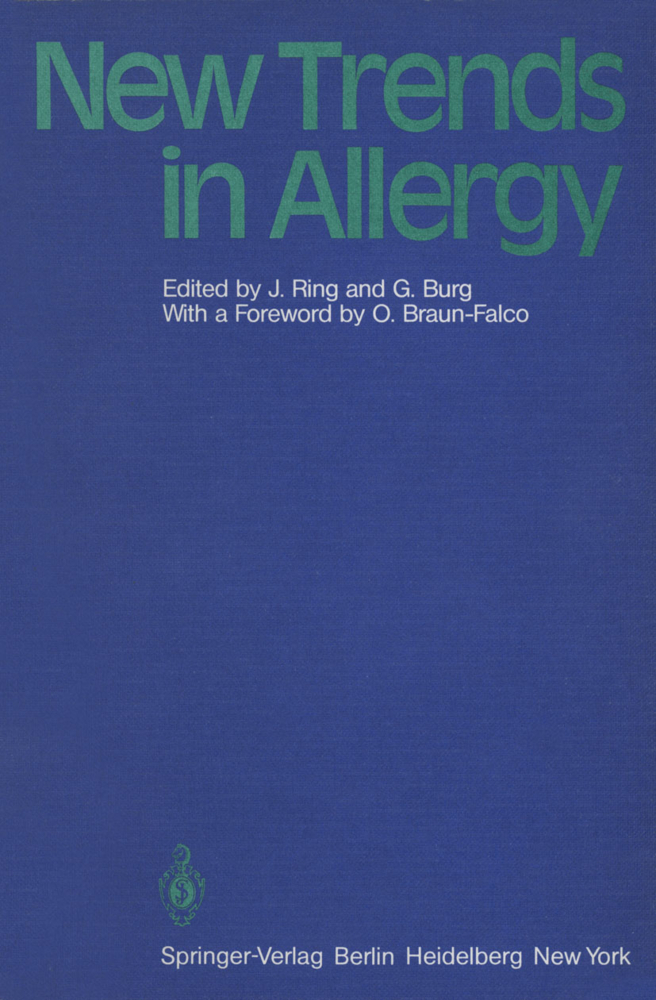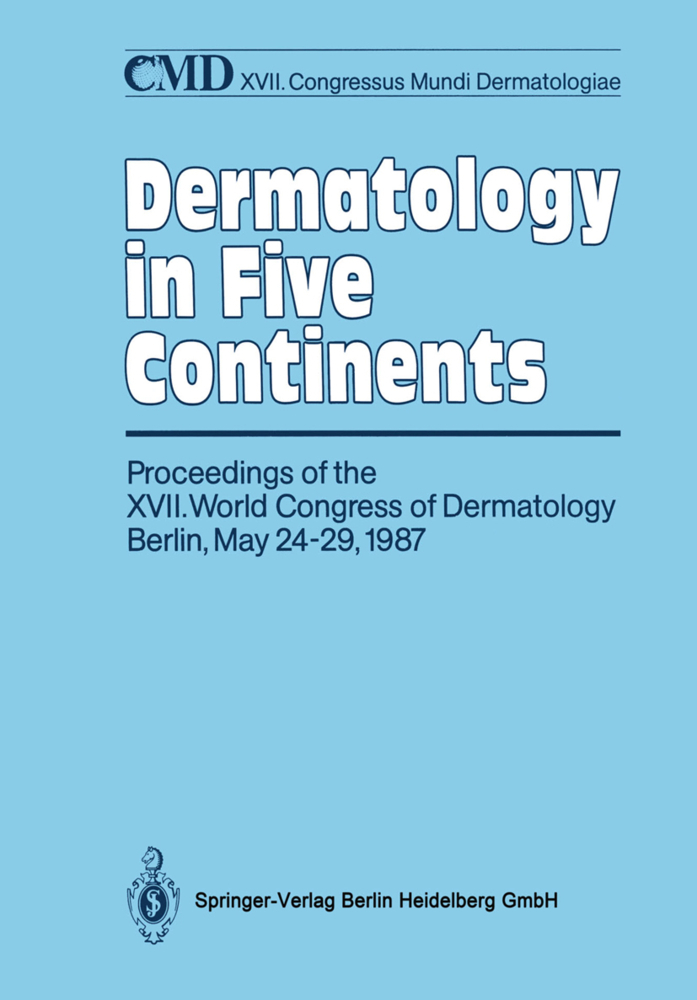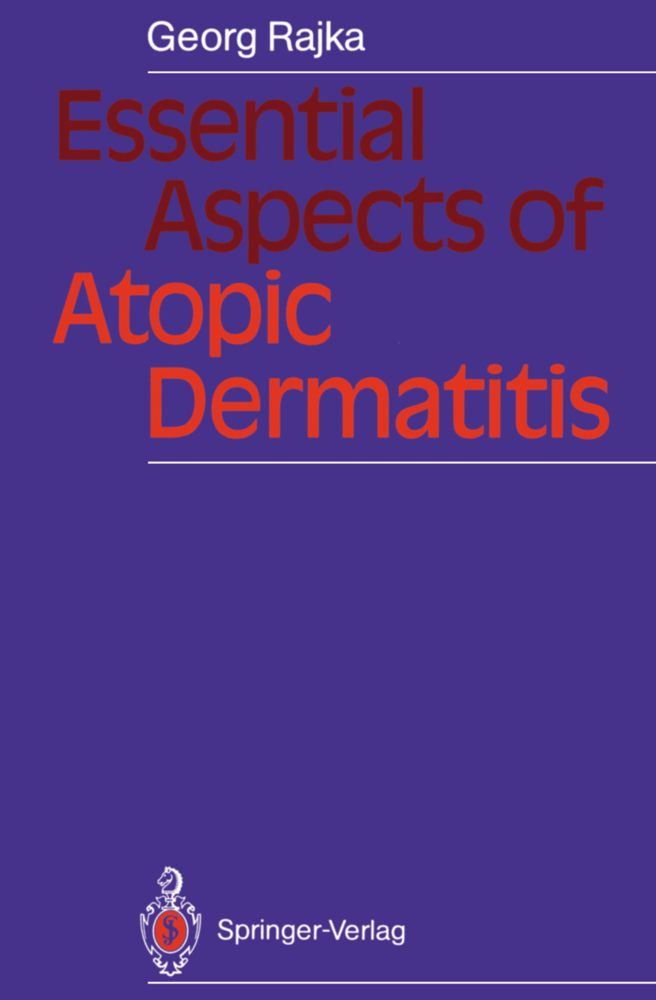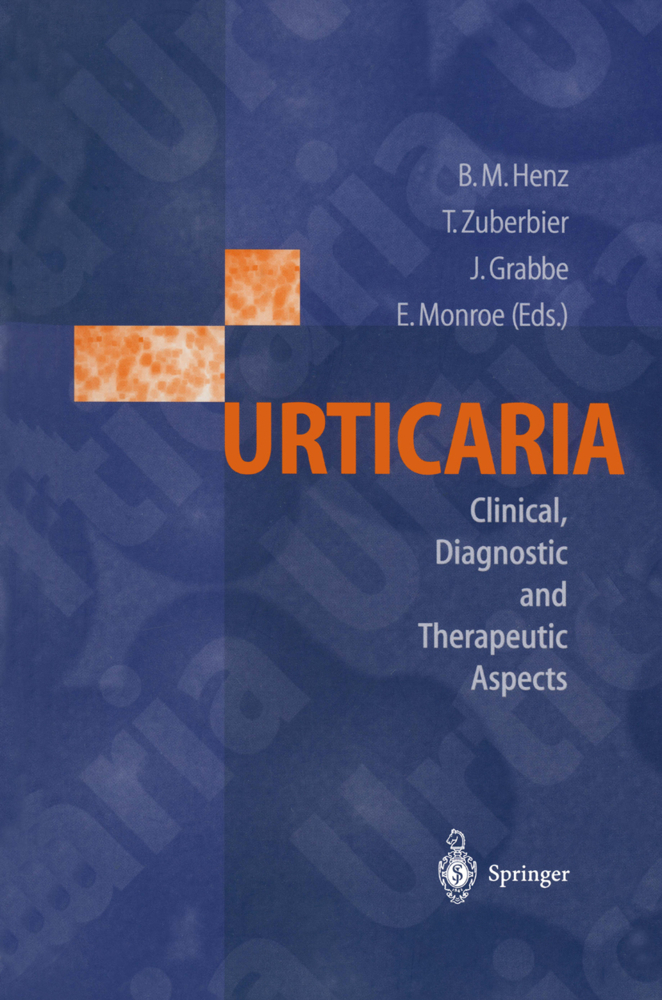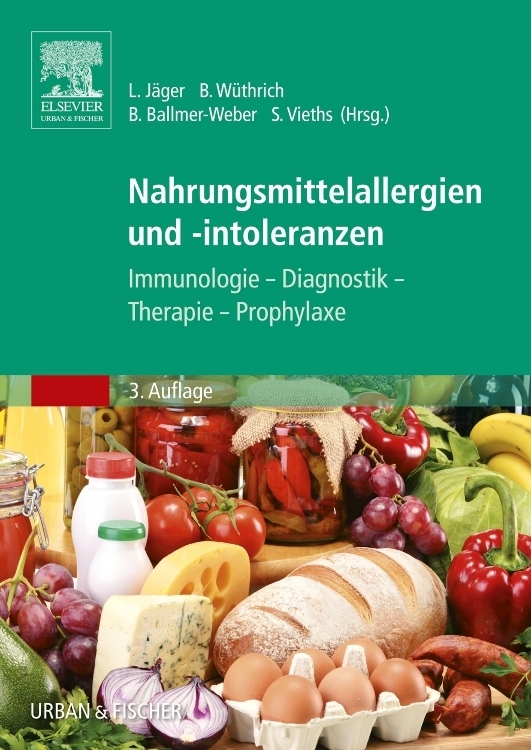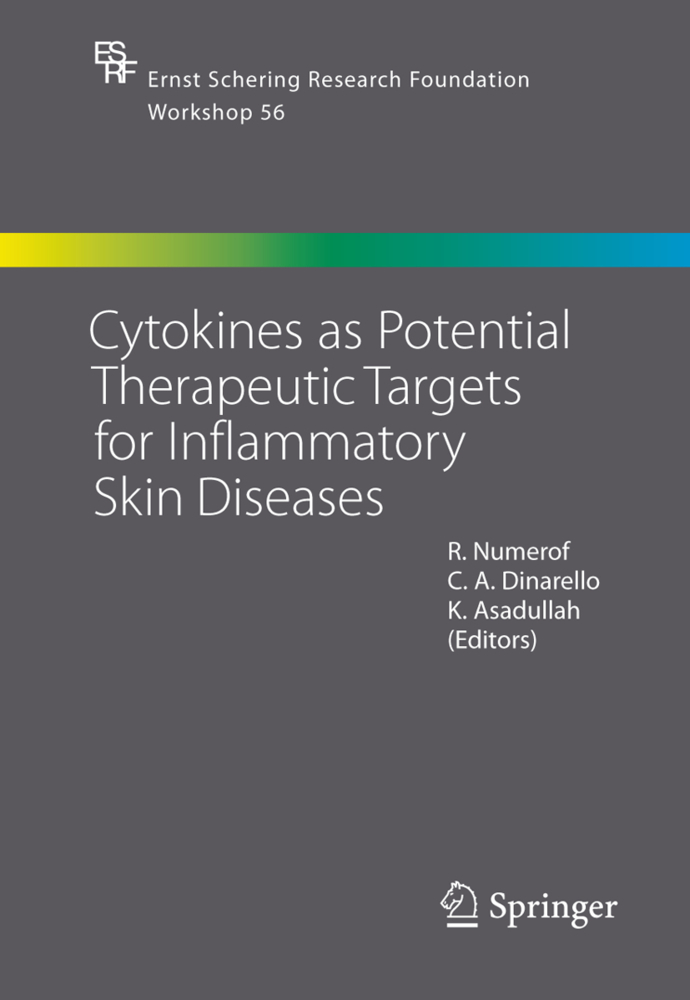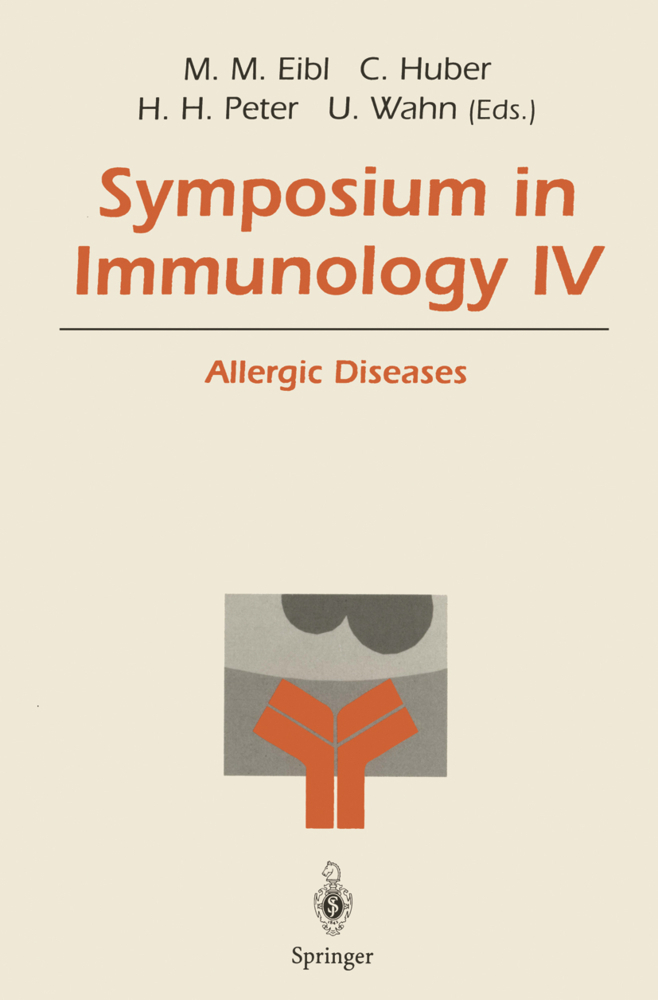New Trends in Allergy IV
Together with Environmental Allergy and Allergotoxicology III
New Trends in Allergy IV
Together with Environmental Allergy and Allergotoxicology III
There is no doubt among experts that the prevalence of allergic diseases has increased in many industrialized countries in recent years. The rea sons for this increase are unknown; only suppositions exist. Many people focus on environmental influences. However, the assumption that air pollution alone is responsible for this increase seems to be too simple: many other influences, including the genetic predisposition of individual patients, allergen exposure, and possibly socioeconomic factors, also have to be taken into consideration. Although our understanding of the complex mechanisms of allergic diseases has considerably improved thanks to the progress made in ex perimental immunology and allergology, we still have a long way to go before this scientific knowledge is translated into new therapeutic mo dalities. For this reason, the scientific community welcomed the gathering of scientists from very different disciplines and different parts of the world at an international symposium, "New Trends in Allergy IV" together with "Environmental Allergy and Allergotoxicology III" in Hamburg in 1995. This volume contains the invited papers, covering a wide range from basic science to practical clinical diagnosis and therapy. A further unique feature of this event was the concomitant first official workshop of the Environmental Pollution and Allergy Committee of the International Association of Allergy and Clinical Immunology (IAACI), at which the state of scientific knowledge in this field was defined and formulated.
2 Significant Variations of Skin Prick Test Results Between Five Fieldworkers in a Multicentre Study
3 Postwar Increase of Allergies in the West, but not in the East of Germany?
4 Epidemiology of Atopic Eczema
5 Air Pollution as a Risk Factor for Allergy: The East-West German Experience
6 Asthma and Atopy in West and East Germany
7 Impact of SO2 and TSP on Allergic Manifestations and Non-Allergic Respiratory Diseases - Results from the Study on School-Beginners in East and West Germany 1991-1993
Allergotoxicology
8 Allergotoxicology: A Research Strategy for the Investigation of the Influence of Environmental Pollutants on the Development of Allergic Sensitization and Disease
9 Pollutants Enhance the Airway Response of Asthmatics to Inhaled Allergen: In Vivo and in Vitro Evidence
10 Exposure to a Combination of 220 ppb Sulphur Dioxide and 400 ppb Nitrogen Dioxide Increases the Airway Response of Mild Asthmatics to Allergen Inhalation in a Time-Lagged Manner
11 Epithelial Function as a Focus of Ozone-Allergen Interaction
12 Acute Effects of Air Pollutants in Asthma
13 Influence of Particles and Surfactant on the In Vitro Response of Macrophages to Ozone
14 Airborne Particles and Allergic Inflammation: Involvement of Eicosanoids, Interleukin 8, and Oxygen Radical Production
15 A Method for Investigating the Effects of Gaseous Pollutants on Pollen Ultrastructure and Allergen Release
16 Exposure of Pollen to SO2, NO2 or O3: Influence on Protein Release and Histamine Releasing Capacity In Vitro
17 Immunotoxicity of Polychlorinated Biphenyls and Related Compounds
18 Chemicals and Induction of Respiratory Allergies
Basic Immunology
19 Regulation of Antigen Presentation in the Lungand Airways: The Central Role of Class II MHC-Bearing Dendritic Cells
20 T Lymphocytes and Subpopulations: Involvement of TH2 Cells in Allergic Diseases
21 Human IgE-Binding Structures
22 Correlation Between Chronic Graft-vs-Host Disease, Mast Cell Degranulation and Fibrosis
23 The Regulation of Mast Cell Development, Survival and Function In Vivo by Stem Cell Factor, the Ligand for the c-kit Receptor: Clinical Implications
24 A Kazal-Type Inhibitor of Human Mast Cell Tryptase
25 Generation of Anti-inflammatory Protein in Glucocorticoid-Induced Human RM3/1 Macrophages
26 Granulocyte-Macrophage Colony-Stimulation Factor GM-CSF and Interleukin-5 Signal Transduction Involves Activation of LYN and SYK Protein-Tyrosine Kinases in Human Eosinophils
27 Bone Marrow Origin of Inflammatory Cells in Allergy
Neuroimmunology
28 Tachykinins in Experimental Allergic Lung Disease
29 Neuropeptides in Allergy
30 Immunomodulatory Capacities of Alpha-Melanocyte Stimulating Hormone and Related Proopiomelanocortins
31 Neuropeptides, Nerve Growth Factor and Eczema
32 Itch and Physiological Covariates
Atopic Eczema
33 Skin Barrier and Eczema
34 TH1 and TH2 Response in Eczema
35 Staphylococcus Aureus Enterotoxins Induce Histamine and Leukotriene Release in Patients with Atopic Eczema
36 Modulatory Factors for Tissue Eosinophilia in Atopic Eczema
37 Characterization of Specific T-Cell Responses to Food Antigens in Atopic Eczema (AE)
38 Topical Ceramide Corrected Epidermal Cell Hyperproliferation and Stratum Corneum Dysmaturation
39 Changing of Meteorologic Factors Influences Pruritus in Atopic Eczema
40 Ultraviolet Therapy of Atopic Eczema
Respiratory Allergy
41 Latex Type I Allergy
42 Molecular Characterization of a Natural Latex Extract andSerological Diagnosis of Latex Allergy
43 Characterization of the Alveolitis in Patients with Acute Episodes of Farmer's Lung
44 Release of Sulfidoleukotrienes In Vitro: A Novel Test System in the Diagnosis of Pseudo-Allergy to Acetylsalicylic Acid
45 The Role of Superantigenicity of Silicate in the Pathogenesis of Autoimmune Diseases in Patients with Silicosis or Asbestosis
Critical Evaluation of Methods in Allergy Diagnosis and Therapy
46 Skin Prick and Intradermal Test: Critical evaluation
47 Nasal Provocation Test: Critical evaluation
48 Conjuinctival Provocation: Critical evaluation
49 Bronchial Provocation: Critical evaluation
50 Patch Tests for Contact Dermatitis: Critical evaluation
51 Photopatch Test: Critical evaluation
52 Atopy Patch Test: Critical evaluation
53 Predictive Testing for Allergy: Critical evaluation
54 In Vitro Model for Contact Sensitization: Stimulatory Capacities of Human Blood-Derived Dendritic Cells and their Phenotypical Alterations in the Presence of Contact Sensitizers
55 Hyposensitization: Critical evaluation
56 Alternatives in Allergology: Critical evaluation
57 "Clinical Ecology": Critical evaluation
Therapy
58 Allergen Epitopes
59 Successful Immunotherapy with T-Cell Epitope Peptides of Bee Venom Phospholipase A2 in Two Patients with Honey Bee Venom Allergy
60 Onset of Action and Efficacy of Astemizole, Cetirizine, Loratadine, and Terfenadine as Tested by Controlled Antigen Challenge in an Environmental Exposure Unit
61 Hyposensitization with Seven Injections: A Placebo-Controlled, Double-blind Multicenter-Study of the Efficacy and Safety of a Short-term Immunotherapy With Molecular-Standardized, Unmodified Grass/Rye Allergen
62 Antigen Specific Peptides: Role in Immunomodulation
63Self-Tolerance: Multiple Strategies for Peripheral Unresponsiveness of T Cells.
Epidemiology
1 Environmental Risk Factors for Atopy2 Significant Variations of Skin Prick Test Results Between Five Fieldworkers in a Multicentre Study
3 Postwar Increase of Allergies in the West, but not in the East of Germany?
4 Epidemiology of Atopic Eczema
5 Air Pollution as a Risk Factor for Allergy: The East-West German Experience
6 Asthma and Atopy in West and East Germany
7 Impact of SO2 and TSP on Allergic Manifestations and Non-Allergic Respiratory Diseases - Results from the Study on School-Beginners in East and West Germany 1991-1993
Allergotoxicology
8 Allergotoxicology: A Research Strategy for the Investigation of the Influence of Environmental Pollutants on the Development of Allergic Sensitization and Disease
9 Pollutants Enhance the Airway Response of Asthmatics to Inhaled Allergen: In Vivo and in Vitro Evidence
10 Exposure to a Combination of 220 ppb Sulphur Dioxide and 400 ppb Nitrogen Dioxide Increases the Airway Response of Mild Asthmatics to Allergen Inhalation in a Time-Lagged Manner
11 Epithelial Function as a Focus of Ozone-Allergen Interaction
12 Acute Effects of Air Pollutants in Asthma
13 Influence of Particles and Surfactant on the In Vitro Response of Macrophages to Ozone
14 Airborne Particles and Allergic Inflammation: Involvement of Eicosanoids, Interleukin 8, and Oxygen Radical Production
15 A Method for Investigating the Effects of Gaseous Pollutants on Pollen Ultrastructure and Allergen Release
16 Exposure of Pollen to SO2, NO2 or O3: Influence on Protein Release and Histamine Releasing Capacity In Vitro
17 Immunotoxicity of Polychlorinated Biphenyls and Related Compounds
18 Chemicals and Induction of Respiratory Allergies
Basic Immunology
19 Regulation of Antigen Presentation in the Lungand Airways: The Central Role of Class II MHC-Bearing Dendritic Cells
20 T Lymphocytes and Subpopulations: Involvement of TH2 Cells in Allergic Diseases
21 Human IgE-Binding Structures
22 Correlation Between Chronic Graft-vs-Host Disease, Mast Cell Degranulation and Fibrosis
23 The Regulation of Mast Cell Development, Survival and Function In Vivo by Stem Cell Factor, the Ligand for the c-kit Receptor: Clinical Implications
24 A Kazal-Type Inhibitor of Human Mast Cell Tryptase
25 Generation of Anti-inflammatory Protein in Glucocorticoid-Induced Human RM3/1 Macrophages
26 Granulocyte-Macrophage Colony-Stimulation Factor GM-CSF and Interleukin-5 Signal Transduction Involves Activation of LYN and SYK Protein-Tyrosine Kinases in Human Eosinophils
27 Bone Marrow Origin of Inflammatory Cells in Allergy
Neuroimmunology
28 Tachykinins in Experimental Allergic Lung Disease
29 Neuropeptides in Allergy
30 Immunomodulatory Capacities of Alpha-Melanocyte Stimulating Hormone and Related Proopiomelanocortins
31 Neuropeptides, Nerve Growth Factor and Eczema
32 Itch and Physiological Covariates
Atopic Eczema
33 Skin Barrier and Eczema
34 TH1 and TH2 Response in Eczema
35 Staphylococcus Aureus Enterotoxins Induce Histamine and Leukotriene Release in Patients with Atopic Eczema
36 Modulatory Factors for Tissue Eosinophilia in Atopic Eczema
37 Characterization of Specific T-Cell Responses to Food Antigens in Atopic Eczema (AE)
38 Topical Ceramide Corrected Epidermal Cell Hyperproliferation and Stratum Corneum Dysmaturation
39 Changing of Meteorologic Factors Influences Pruritus in Atopic Eczema
40 Ultraviolet Therapy of Atopic Eczema
Respiratory Allergy
41 Latex Type I Allergy
42 Molecular Characterization of a Natural Latex Extract andSerological Diagnosis of Latex Allergy
43 Characterization of the Alveolitis in Patients with Acute Episodes of Farmer's Lung
44 Release of Sulfidoleukotrienes In Vitro: A Novel Test System in the Diagnosis of Pseudo-Allergy to Acetylsalicylic Acid
45 The Role of Superantigenicity of Silicate in the Pathogenesis of Autoimmune Diseases in Patients with Silicosis or Asbestosis
Critical Evaluation of Methods in Allergy Diagnosis and Therapy
46 Skin Prick and Intradermal Test: Critical evaluation
47 Nasal Provocation Test: Critical evaluation
48 Conjuinctival Provocation: Critical evaluation
49 Bronchial Provocation: Critical evaluation
50 Patch Tests for Contact Dermatitis: Critical evaluation
51 Photopatch Test: Critical evaluation
52 Atopy Patch Test: Critical evaluation
53 Predictive Testing for Allergy: Critical evaluation
54 In Vitro Model for Contact Sensitization: Stimulatory Capacities of Human Blood-Derived Dendritic Cells and their Phenotypical Alterations in the Presence of Contact Sensitizers
55 Hyposensitization: Critical evaluation
56 Alternatives in Allergology: Critical evaluation
57 "Clinical Ecology": Critical evaluation
Therapy
58 Allergen Epitopes
59 Successful Immunotherapy with T-Cell Epitope Peptides of Bee Venom Phospholipase A2 in Two Patients with Honey Bee Venom Allergy
60 Onset of Action and Efficacy of Astemizole, Cetirizine, Loratadine, and Terfenadine as Tested by Controlled Antigen Challenge in an Environmental Exposure Unit
61 Hyposensitization with Seven Injections: A Placebo-Controlled, Double-blind Multicenter-Study of the Efficacy and Safety of a Short-term Immunotherapy With Molecular-Standardized, Unmodified Grass/Rye Allergen
62 Antigen Specific Peptides: Role in Immunomodulation
63Self-Tolerance: Multiple Strategies for Peripheral Unresponsiveness of T Cells.
Ring, Johannes
Behrendt, Heidrun
Vieluf, Dieter
| ISBN | 978-3-642-64398-9 |
|---|---|
| Artikelnummer | 9783642643989 |
| Medientyp | Buch |
| Auflage | Softcover reprint of the original 1st ed. 1997 |
| Copyrightjahr | 2012 |
| Verlag | Springer, Berlin |
| Umfang | XXVIII, 376 Seiten |
| Abbildungen | XXVIII, 376 p. |
| Sprache | Englisch |

